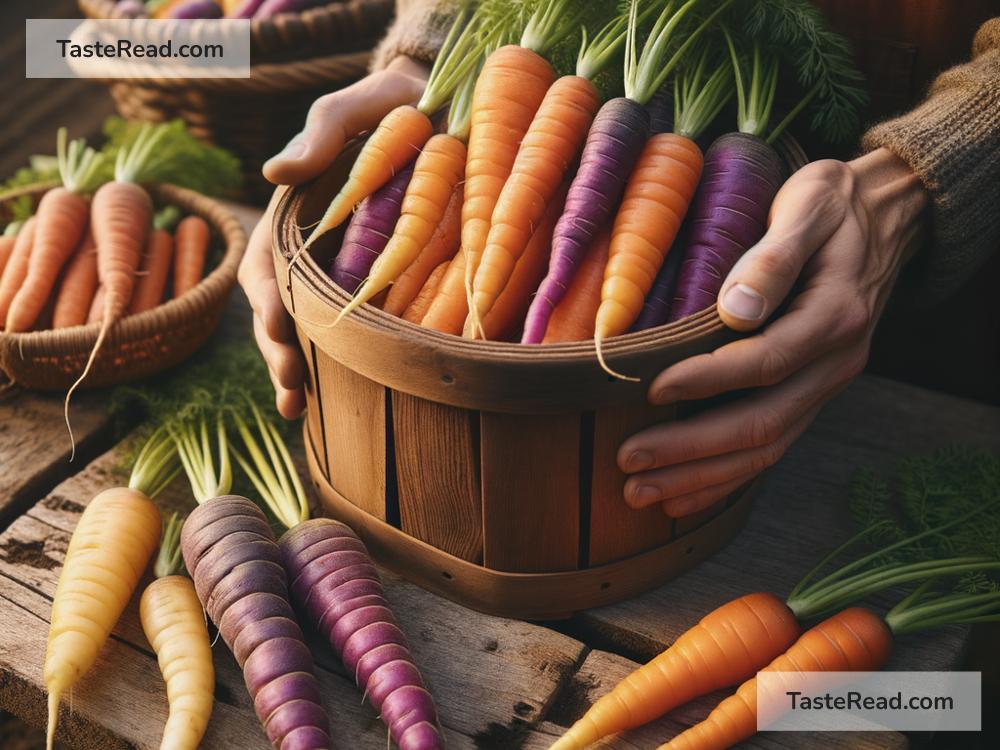The Curious Story of How Carrots Became Orange
When you picture a carrot, chances are you’re imagining a bright, orange vegetable. Carrots and the color orange just seem like a natural pair, right? But what if I told you carrots weren’t always orange? In fact, carrots used to come in a variety of colors, like purple, white, yellow, and even red! The story of how carrots became orange is an interesting blend of history, politics, and farming. Let’s dig into the curious tale of the orange carrot.
Early Carrots: A Rainbow of Colors
Carrots have been grown and enjoyed by humans for thousands of years. The wild ancestors of carrots originated in Central Asia and regions near present-day Afghanistan. These ancient carrots looked very different from the orange ones we know today. Instead, the original carrots were mostly purple and white, often with a thin and twisted shape. Yellow and red carrots also existed, depending on the region they were grown.
For hundreds of years, people used carrots mainly for their roots, which were sometimes bitter, and even their seeds and leaves. Carrots were prized for their ability to grow in tough conditions and were used for cooking as well as for medicinal purposes. Over time, farmers began improving carrots by selectively breeding them to make their roots larger, sweeter, and less bitter. But orange carrots were still nowhere to be found.
So Where Do Orange Carrots Come From?
The orange carrot we know today was not a natural occurrence—it came from humans experimenting with selective breeding. Around the 16th century, farmers in the Netherlands (what we now call Holland) were actively trying to improve different kinds of vegetables, including carrots. Dutch growers took yellow and red carrots and bred them with white ones to create a new variety that was distinctively orange.
Why orange? This is where the story gets truly interesting! Some historians believe that orange carrots became popular in the Netherlands because of a political connection to the House of Orange, the royal family that led the Dutch struggle for independence from Spain in the late 1500s. The House of Orange-Nassau used the color orange as a symbol of their leadership and resistance, and orange became an important national color for the Dutch people.
Whether or not the link to the royal family was intentional, Dutch farmers succeeded in creating an orange carrot that was sweeter, more appealing, and better suited to grow in northern climates. These orange carrots quickly gained popularity throughout Europe and eventually spread around the world.
Why Did Orange Carrots Take Over?
Orange carrots didn’t just win people over because of their royal connections—they also had practical benefits. Compared to purple or white carrots, orange ones were sweeter, less likely to stain cookware (purple carrots can bleed their color like beets), and more uniform in appearance. Their bright orange hue also made them stand out as a colorful addition to meals.
Another key advantage of orange carrots is their nutritional value. Orange carrots are rich in beta-carotene, a pigment that produces their vibrant color and turns into vitamin A in the human body. Vitamin A is essential for eye health, immune function, and general wellbeing, making orange carrots not just tasty but also incredibly healthy.
Over time, orange carrots became the dominant type of carrot grown and eaten worldwide. By the 17th century, they had become the standard carrot in Europe and were later brought to the Americas by European colonists. Today, orange carrots account for more than 80% of all the carrots grown globally.
What Happened to Purple and Other Colored Carrots?
Although orange carrots became the favorite, the purple, white, red, and yellow varieties didn’t disappear completely. In fact, these colorful carrots are still grown in many parts of the world, and they’ve been making a comeback in recent years as people seek out unique and heirloom vegetables. You can often find these rainbow carrots at farmer’s markets or specialty grocery stores. They’re not just pretty to look at; they also come with unique flavors and nutrition profiles.
For example, purple carrots are rich in anthocyanins, which are antioxidants that help fight inflammation, and yellow carrots have different kinds of carotenoids contributing to their color. So, if you ever spot a bundle of rainbow carrots, give them a try—they’re a reminder of the colorful history of this humble vegetable.
A Vegetable with History
The story of how carrots became orange is a great example of how humans influence the world around them, even in small ways. What started as an experiment in farming became a cultural and global phenomenon. Each time you crunch into an orange carrot, you’re enjoying the result of centuries of innovation, hard work, and a little bit of Dutch creativity.
So, the next time you cook with carrots, remember: they weren’t always orange. And who knows? Maybe in the future, carrots will come in even more colors—or orange could someday lose its crown to purple or yellow once again!


